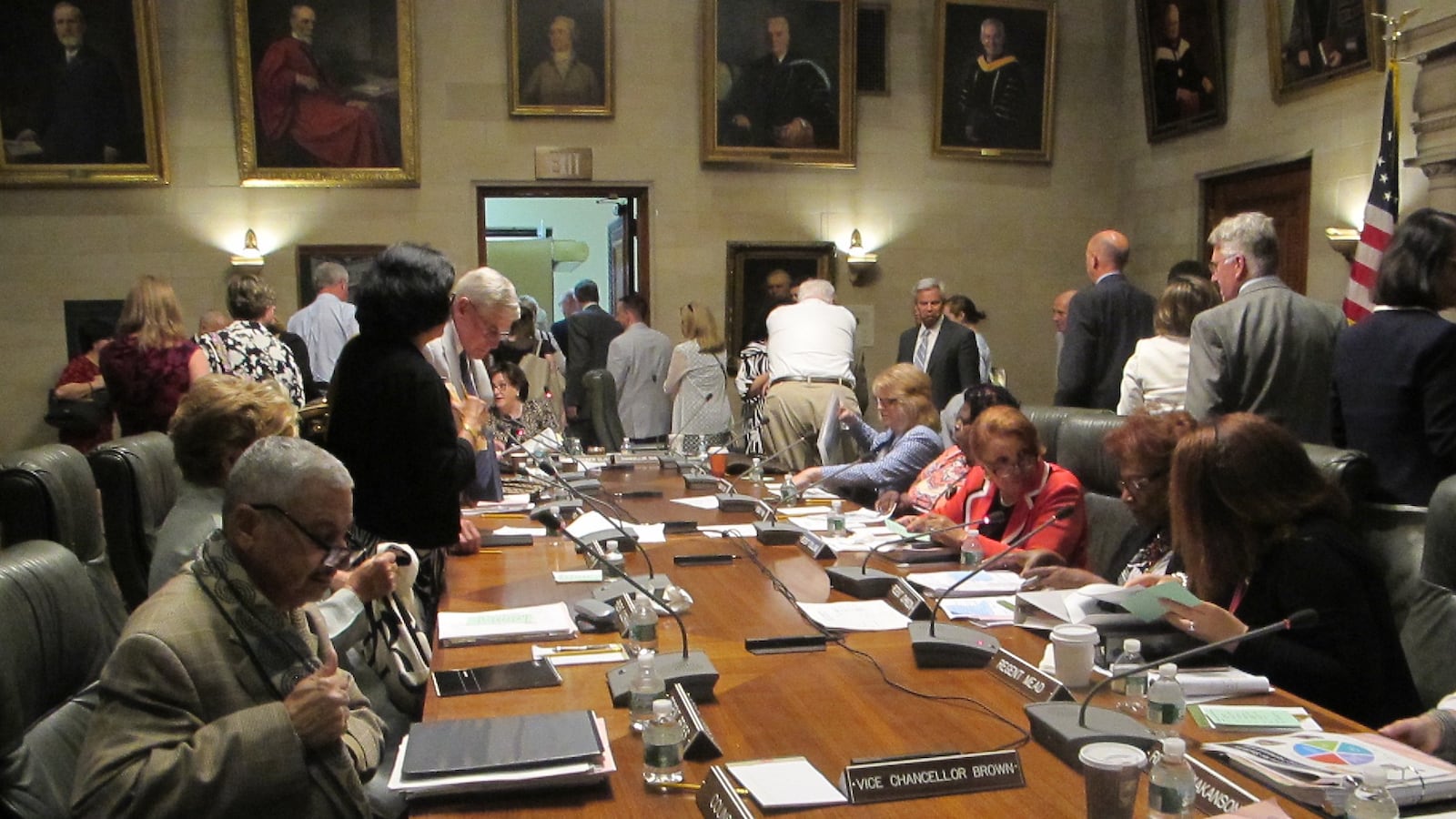They’re making their list and checking it twice.
On Monday, New York’s top education policymakers began the annual rite of requesting funding for education projects they want lawmakers to bake into the state budget, which included $25.8 billion for education last year. The requests are still preliminary; next month, they’ll submit a final version.
A main focus of the state Board of Regents is funding the major new school-improvement plan that each state was required to create under federal law. They’re also seeking money to help schools crack down on bullying, to make free online courses available to more districts, and to create new exams.
The state education department has not yet requested a specific total amount of school funding, but draft documents say a top priority is to increase funding for high-needs schools. Last year, the Regents, which oversee the education department, asked for a $2.1 billion boost in school aid. In the end, the legislature approved a $1.1 billion increase.
Board members on Monday also addressed the looming issue of potential federal budget cuts and an impending $4.4 billion state deficit, according to projections by the governor’s office. State officials suggested Monday that those shortfalls could force them to pare down their funding requests.
“Let’s just really figure out how to do this in a way that makes us look realistic, mindful, thoughtful, and advances the things that we care about,” Chancellor Betty Rosa said.
Here are four things to know about the board’s budget requests:
1.) They focus on four key policy areas.
A state document outlines four main funding priorities: early-learning programs, supports for English learners, expanding career and technical education, and carrying out the state plan created under the new federal Every Student Succeeds Act.
New York’s ESSA plan provides a roadmap for how it evaluate and intervene in struggling schools.
2.) They call increased funding for high-poverty districts a “core priority.”
The Regents want districts with many poor students to get more funding — though they didn’t say how much.
In a draft document, department officials threw their weight behind the “foundation aid” formula, which is designed to give more funding to high-poverty districts.
The formula was created in response to a lawsuit that claimed the state had violated students’ rights by providing districts with too little funding to offer them a solid education. Last year, the state education department estimated that total school aid was $4.3 billion short of what is required by the formula — though Gov. Andrew Cuomo says the formula is a goal, not a requirement.
In its latest budget request, the department says a “core priority” is to push for money promised by the formula to be delivered on an “aggressive timeline.” However, the board on Monday did not float specific amounts it will seek in “foundation aid” or total state funding this year.
3.) They want to award new grants to help cut down on bullying and expand online classes.
The Regents hope to launch an $8 million grant program that would help schools track their school culture and safety, which they hope will help prevent bullying. Another $3 million request would expand online coursework options, with a goal of providing more advanced courses for needy school districts that may not be able to afford traditional courses. Both initiatives are part of the state’s ESSA plan.
The board included other new asks as well, including $100,000 to stream its meetings online.
4.) They want to create new types of tests.
The board wants to develop new types of tests, including foreign-language Regents exams and project-based assessments, which would mark a departure from paper-and-pencil multiple choice tests.
However, the requests will likely be smaller than last year.
They asked for $5 million last year for foreign-language Regents exams in Spanish, French, Italian and Chinese, but said they could shrink the number of languages this year. Similarly, the state documents says more time and research is needed to determine how much it will cost to create project-based assessments.

